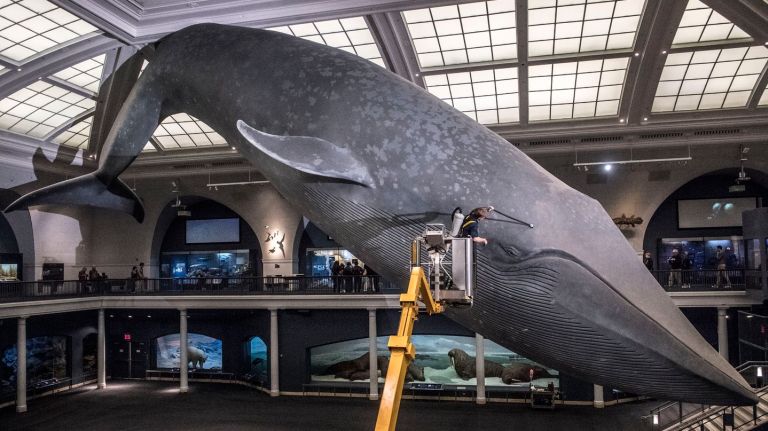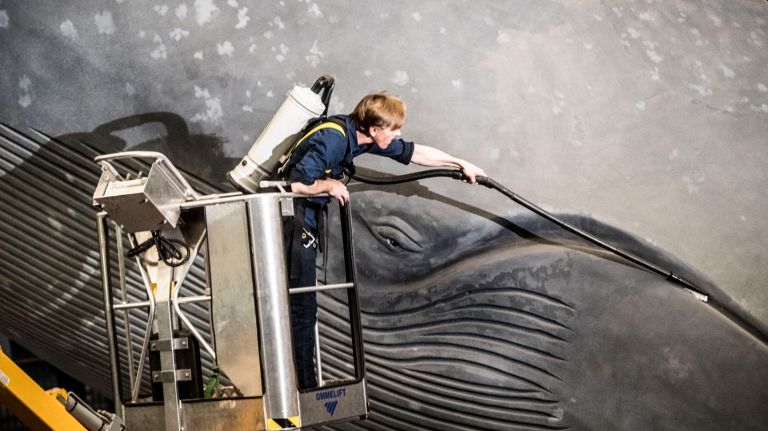
Even New York City’s most iconic cetacean needs a spa day.
The 94-feet-long, 21,000-pound fiberglass blue whale that looms over the American Museum of Natural History’s Milstein Hall of Ocean life underwent its annual cleaning on Tuesday.
Crowds of visitors watched as Trenton Duerksen, perched almost 50 feet in the air on an aerial work platform, gently vacuumed a year’s worth of dust from the massive model.
“I think the first five minutes of being back on the lift is probably the most exhilarating and scary,” Duerksen, an exhibition maintenance manager, told amNewYork during a break. “You get about 20 feet up and everything is fine up until that point. Then you get used to it after a few minutes.”

The whale, which is modeled from a female blue whale found in 1925, debuted in 1969.
More than 30 years later, it was renovated to make its features more accurate, said Dean Markosian, director of the Museum’s Department of Exhibition.
“The blowhole was modified, some work was done on the eyes and they added a belly button,” Markosian said. “The original model was based on limited information and a whale that was dead.”
Photos and video of living blue whales helped them glean more understanding of the creature that is believed to be the largest animal ever to exist on planet Earth.
The whale also received a fresh coat of cobalt and cerulean blue paint — more than 25 gallons worth — before it was reintroduced to crowds in 2003.
The model is one of the museum’s most popular exhibits as it seems to float above the hall. It is actually held up by an intricate steel armature inside the fiberglass and polyurethane body.
“We want people to see the amazing diversity of nature and the wonder of the natural world,” Markosian said.
He noted that while the model doesn’t suffer from much wear and tear, it does collect a lot of dust.
“There’s a lot of surface area,” Markosian said.
Duerksen uses a long handle and a small, soft brush to carefully vacuum up dust from the whale. It’s a process that takes almost two days.
“My biggest fear is missing spots,” he said.
David and Adrienne Steiner and their son, Alexander, were visiting from Wisconsin when they happened to catch Duerksen at work.
“I figured they had to clean off the barnacles,” laughed David Steiner.




































